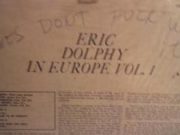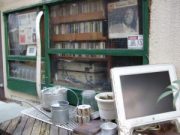
Monday, my last day in town. Why do trips always go by so fast? I woke up feeling fresh and ready for a busy day ahead, dertemined not to lose the afternoon to a nap back at the hotel. After my now usual breakfast of papaya, melon and fresh juice & coffee, I zoomed downstairs and hopped into Htun Htun’s cab, which was waiting outside the hotel. We sped up and out of downtown Yangon to Gitameit where I found Ne Myo, his brother (back from Thailand where he is a music grad student) and some of the Gitameit staff having morning coffee outside the school.
 Even in the middle of an intense ‘hot season’ the outdoor life in Myanmar is omnipresent, especially early in the morning and later in the evening. We chatted there a few minutes then went inside at 9am to meet pianist U The Oo for a lesson on the Burmese piano tradition. First Ne Myo gave some background on how Burmese musicians accompany vocalists, how the percussion marks time, and then how the instrumentalist can improvise.
Even in the middle of an intense ‘hot season’ the outdoor life in Myanmar is omnipresent, especially early in the morning and later in the evening. We chatted there a few minutes then went inside at 9am to meet pianist U The Oo for a lesson on the Burmese piano tradition. First Ne Myo gave some background on how Burmese musicians accompany vocalists, how the percussion marks time, and then how the instrumentalist can improvise.
U Thet Oo then sat at the piano and began to play, warming up with some improvisation and then playing what he said was a Siamese influenced Burmese classical tune.
Even with this old piano in need of a re-tuning, I was riveted watching and listening to him play, a completely alien method of playing the piano for me. Ne Myo explained that the piano first arrived in Burma in the mid-18th century as a gift to the king from an Italian diplomat. Local musicians adapted their indigenous style of playing the harp to the new instrument, including a very unique three finger technique on each hand.
I peppered questions to U Thet Oo about his remarkable style. Ne Myo translated his answers, explaining that he could not read western musical notation, had heard composers like Bach and Beethoven but was not really familiar with their music, and that he had never heard any jazz recordings. Fascinating! Was Myanmar really so closed that this master musician had had such little exposure to music from around the world? Ne Myo explained again that for a man of U Thet Oo’s age this was the norm. He was born and spent the first 50+ years of his life in a country with a fiercely censored media, virtually no access to imported records, and no ability to listen to whatever records were passed around by the rare collectors. Therefore his style of playing is almost completely without outside influence. I was completely entranced by his piano playing, for sure a highlight of this trip was sitting there for a private performance.
We said good bye to U Thet Oo then grabbed a local cab to head slightly west to visit legendary slide guitarist U Thin. Our cabbie provided a slightly different soundtrack.
Going from the Burmese piano to the hip-hop taxi turned my mind into a jumble of thoughts. How could U Thet Oo have grown up learning virtually nothing of the western music tradition while this young cab driver was pumping out local hip-hop? I was missing something here…when/how did contemporary music start hitting the pirate CD shops? Surely it must have been before the 2011 structural reforms by the government, as 5 years would hardly be enough for kids to listen to hip-hop, internalize it, then form their own local groups..or was that plenty of time? I rode in the cab wishing I had studied more musicology and sociology in grad school rather than East Asian politics..
We arrived at U Htin’s home to a warm welcome and an early lunch. After lunch U Htin showed me some of the many old photographs he has up on the wall; it was a visual history of 20th century Burmese music right there in his living room. What a treasure for anyone diving deep into the study of these traditions.
U Thin then took us into his music room and began to warm up on his favorite slide guitar, given to him by his teacher more than 65 years ago. (Thankfully an air-conditioned room as the temperature on the 2nd floor of his house was easily 40C if not higher.)
At 86 years old and with diabetes (and in the infernal heat of the hot season) U Htin’s playing is not what it once was of course, but you can still get a feel for his prowess on the guitar. He even pulled out a modified acoustic that he plays as a slide: he found this guitar abandoned somewhere so he altered it and still uses it 20 years later. U Htin loves playing for visitors so many people passing through Yangon go to meet him, meaning there is a lot of footage on You Tube. Sadly, there are only a few students interested in continuing the tradition of Burmese style slide guitar playing, and certainly no one who can approach U Htin’s level…
We stayed with U Htin for another hour or so and then went back to the Gitameit school. I said goodbye to my host and guide Ne Myo, promising to see him again next year in the brand new Gitameit building, then scooted back in a cab back to my hotel to change before heading out for a couple beers with Aaron the jazz guitarist.
We met on a street near Chinatown and wandered a bit looking for a quiet spot to have a chat. My groovy music joint radar still worked even in Yangon, and I found us a little place playing excellent tunes: Groove Holmes and latin funk & boogaloo on CD. A very good sign and maybe an indication that there is more of my kind of music floating around the city than I experienced so far amidst the endless local hip-hop, pop and heavy metal? And think of that for a longer moment; I was in a bar in Yangon listening to Groove Holmes. This is an amazing world at times.
Aaron has lived in the country for 3+ years and already has a lot of insightful observations, in addition to some rather wild business experiences that are best left aside for now. (I’ll merely comment that it would appear conducting any kind of business transactions in the new open climate of the country will very much resemble post-communist Russia, i.e. there no rules.)
We wandered back towards the center of the town to look into this large, semi-open air tavern on the 2nd floor above an intersection.  The waiters here were very enthralled with the two foreign customers who rambled in, especially when Aaron ordered smoothly in Burmese. We settled into a long conversation about music and how he is trying to help a lot of the younger students here. I was impressed with his dedication amidst the complete indifference of formal education here towards music. We got up to leave, after a quick look at the tavern’s ‘live show’ of some horribly off-key karaoke by ladies dressed like the Sweeney Sisters. I was drunk enough to be tempted by the show, but not quite drunk enough to stay for it. Aaron and I parted ways, promising to meet again next spring when I hoped to return. I rambled back to my hotel, stopping once more for a final night time look at Sule Pagoda.
The waiters here were very enthralled with the two foreign customers who rambled in, especially when Aaron ordered smoothly in Burmese. We settled into a long conversation about music and how he is trying to help a lot of the younger students here. I was impressed with his dedication amidst the complete indifference of formal education here towards music. We got up to leave, after a quick look at the tavern’s ‘live show’ of some horribly off-key karaoke by ladies dressed like the Sweeney Sisters. I was drunk enough to be tempted by the show, but not quite drunk enough to stay for it. Aaron and I parted ways, promising to meet again next spring when I hoped to return. I rambled back to my hotel, stopping once more for a final night time look at Sule Pagoda.
 I had an early flight to Malaysia the next day, yet I couldn’t help lingering outside, soaking in the atmosphere. There was something about this place I couldn’t quite yet grasp, something still hidden and unsettling. Was is still just my unease about the tense social and political situation of the country? Perhaps. But alongside those feelings was a deep, growing fascination and love for what I had encountered. I wanted to stay and study the language; learn more about how Buddhism is the foundation of so much of the society; meet U Win Maung again and take lessons on the Burmese Harp; talk to the Indian merchants downtown about their struggle for a place in Burmese civil society; go back to Gitameit School and talk to more of the students about music; travel up north to meet the Karan people and learn about their history and fight for equality in Myanmar. So much to see and discover in this complex country..but that would have to wait for next time. I finished up a bottle of Myanmar Beer outside Sule, went back to the hotel and promptly fell asleep. And I only cried a little bit at the airport in the morning.
I had an early flight to Malaysia the next day, yet I couldn’t help lingering outside, soaking in the atmosphere. There was something about this place I couldn’t quite yet grasp, something still hidden and unsettling. Was is still just my unease about the tense social and political situation of the country? Perhaps. But alongside those feelings was a deep, growing fascination and love for what I had encountered. I wanted to stay and study the language; learn more about how Buddhism is the foundation of so much of the society; meet U Win Maung again and take lessons on the Burmese Harp; talk to the Indian merchants downtown about their struggle for a place in Burmese civil society; go back to Gitameit School and talk to more of the students about music; travel up north to meet the Karan people and learn about their history and fight for equality in Myanmar. So much to see and discover in this complex country..but that would have to wait for next time. I finished up a bottle of Myanmar Beer outside Sule, went back to the hotel and promptly fell asleep. And I only cried a little bit at the airport in the morning.
POSTSCRIPT
As soon as I got back to Japan I picked up the book ‘Blood, Dreams and Gold; The Changing Face of Burma’ by Richard Cockett. It’s an excellent introductory overview of the country and all its complexities, I highly recommend it. Many thanks to the Library Jazzman for telling me about.















